Dodge City. Tombstone. Durango. We’ve been to them all but the old west town that still remains the most authentic is rough and tumble Silverton, Colorado. At 9,000 feet, the mining town of Silverton was a magnet for miners, saloon keepers, and the few women who kept the men company.
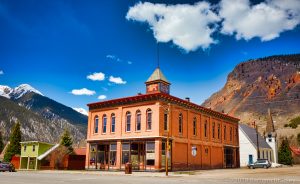
The frontier flavor of Silverton isn’t fake and recreated for tourists.The western free spirit remains today. That may be due to the fact that the town is still very remote in the San Juan Mountains. Getting to Silverton is an adventure in itself! This is the land of “the 14-ers”, the peaks in Colorado that are 14,000 feet or higher. Silverton is remote and isolated.
GETTING THERE
There are only two ways to reach remote Silverton. One is by booking with the Durango-Silverton Railroad and experiencing the thrilling trip on the narrow gauge train that has been running continuously since 1882. The 45-mile route takes approximately 10 hours roundtrip.
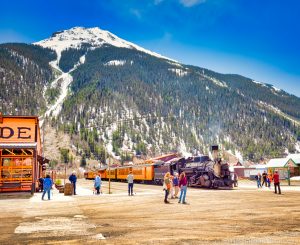
We chose, instead, to go with a guide in a van from Durango to Silverton with stops along the way. This was part of our ticket on the Durango-Silverton Railroad. You can drive yourself, of course. The drive is on Colorado 550, known as the “Million Dollar Highway.”
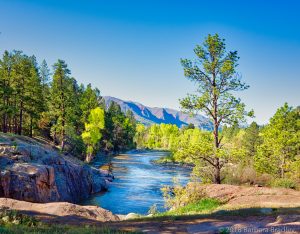
THE MILLION DOLLAR HIGHWAY
The Million Dollar Highway is a thrill! Are you ready for the hair on your neck to stand up straight?
Colorado Route 550 is the 2-lane Million Dollar Highway (built in the late 1880s) and is one of the most spectacular drives in the United States! (the Ouray to Silverton stretch is incredible and traverses the 11,000 + elevation Red Mountain Pass) The Million Dollar Highway is a part of the San Juan Skyway Scenic Byway. We can ONLY imagine how breathtaking the drive is in the fall when the Aspen are at their golden best.
The portion of the highway from Durango to Silverton is only about 25 miles long but takes hours to drive. This trip is not for sissys! There are few or no guardrails and tight switchback curves. We were told that some of the drop offs are over 1,000 feet down! The speed limit is from 10-15 mph.
There can be snow and ice any time of year. After all, you drive among 4 of “The Fourteeners.” Avalanches, heavy snowfall and landslides can happen at any time. Every year snow plows (and their drivers) are lost over the sides of the highway. Be certain to check the weather forecast before setting out because there are only one or two pullouts along the drive.
Molas Pass (10,970 feet elevation) on the highway is one of the higher and more dangerous of the passes in Colorado. As you drive the pass, think about the fact that riders in the annual Iron Horse Bicycle Classic race try to beat the train from Durango to Silverton and take Molas Pass on bikes!! Unbelievable!
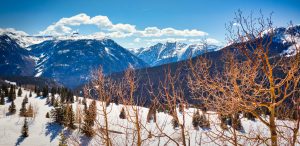
SILVERTON: A TASTE OF THE GOLD RUSH DAYS
THERE’S GOLD!
The Colorado Gold Rush of 1858-59 brought thousands of prospectors to Colorado. Though the terrain was practically insurmountable, Charles Baker found gold where the Animas River was joined by Cement Creek and Mineral Creek at 9,300 feet. Word spread and Baker actually built a toll road following the Animas River from New Mexico.
The Ute Tribe did not take kindly to the whites flooding into the San Juan Mountains. Even though the Treaty of 1868 established the land as Ute, whites continued to come in hopes of treasure.
By the end of 1873, more than 4,000 claims had been recorded in the mountains.
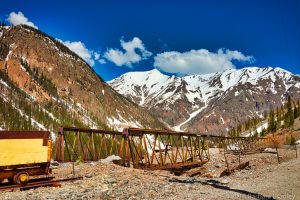
Mining companies advertised in foreign newspapers, looking for men to work the mines. The trip to Silverton was treacherous. Silverton became a boom town, established in 1874. By 1880, Silverton was a town of about 1,000 people. The boom lasted until 1910 when the price of metal fell.
The weather was extremely harsh and safe mining was unheard of. The miners rarely got time off and when they were able to reach Silverton, they took advantage of the opportunities with prostitutes and gambling. Robbery, shootings and some recorded lynchings were the result.
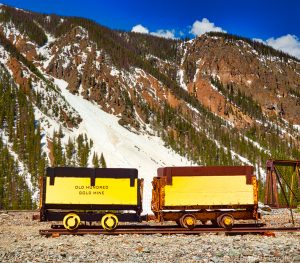
The town was so isolated that miners had to climb down the mountain for up to 7-11 miles in order to reach town. Don’t forget, after a good time in Silverton, they had to hike back up to the mines. Some of those climbs took days. Some miners rode in the dangerous gondolas strung over the gorges to avoid hiking up the mountain.
Before the Durango & Silverton Railway reached the town in 1882, it took 13 days for a stagecoach to make the trek from Durango with supplies.
SILVERTON IS STILL ISOLATED
We strolled Silverton’s streets in less than an hour, stopping constantly to take photographs. It is a tiny town and a fabulous example of a town of the late 1800s. There is only one paved street in the entire town.
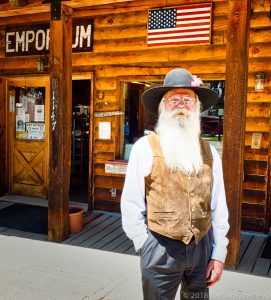
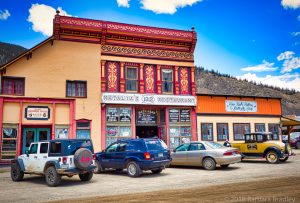
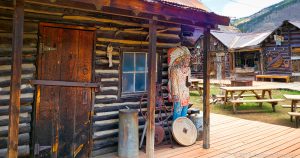 |
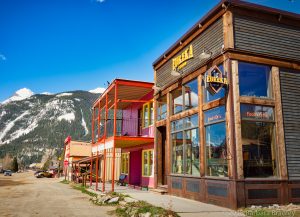 |
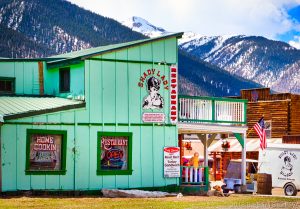 |
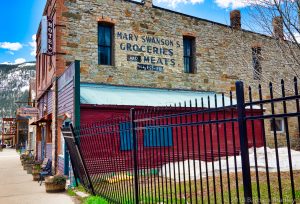 |
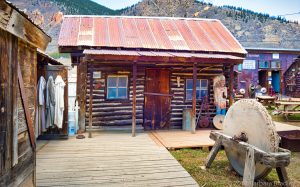 |
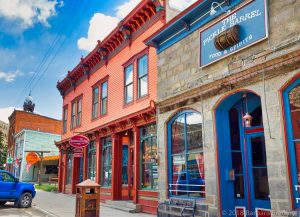 |
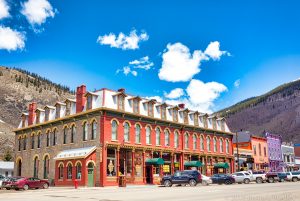
The Grand Imperial Hotel was originally called the Thomson Block and is 135 years old. It is the crown jewel of Silverton.
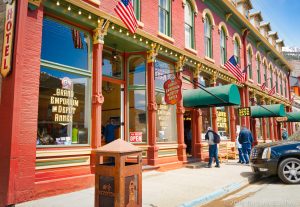
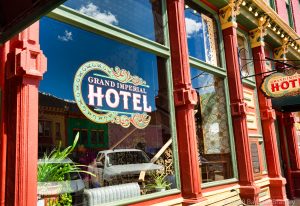
MINING
Be sure to visit the San Juan County Historical Mining Heritage Museum and drive further up the mountain from Silverton to see some mines.
Even though it was late May when we visited, some of the roads at higher elevations (above Silverton) were still covered by avalanche snow. We easily made it to the Old Hundred Mine and the drive was really beautiful. The Old Hundred Mine and its abandoned gondola cars hanging precariously over the gorge were highlights of that drive! The Old Hundred was named for the 100th Psalm in the Bible.
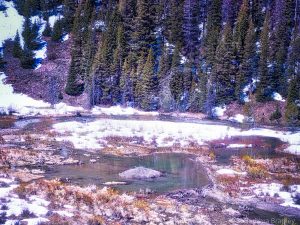
You can actually enter the Old Hundred Mine (organized in 1904) and take a tour into Galena Mountain which is 13,000 in elevation! There were originally three tramways built to the various levels of the mine. The angle on the rides miners took in the tramways was 48 degrees! One of the trams rose 1200 feet and was 1700 feet long! These days, they will let you pan for silver copper and gold too! What an incredible experience! Panning is free when you purchase a ticket.
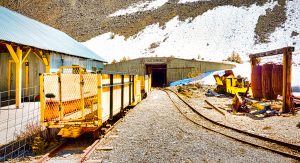
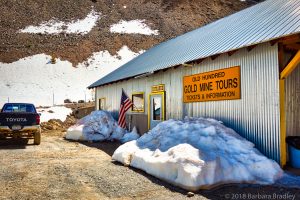
Unfortunately, the Old Hundred Mine was not very prosperous. More money was spent on the infrastructure of the mine and ways to get to it than the value of the metal mined. Just imagine-one of the biggest veins of ore was found at the top of what is called the 7th level of the mine.
There are no roads and the only trail to the site is 300 feet above the mine buildings. They had to lower supplies down to the mine by ropes! This level is where the remains of the Old Hundred Mine Bunkhouse and Tram House still sit.
In the early 1980s, explorers found that the bunkhouse still had a long dining room table where the miners ate. On the second floor were 25 wooden bunks, sporting graffiti from miners who lived there a century before. Efforts have been made to save the buildings with supplies being helicoptered in! Work on the buildings continues.
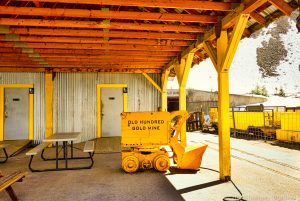
GHOST TOWNS
One of the delights of this area of the San Juan Mountains are the numerous ghost towns created by the mining boom and bust days. Just down the mountain from the Old Hundred Mine is Howardsville. While a couple of residents can still be found, Howardsville is essentially abandoned. It was established in 1874 and was an important mining camp and the county seat of La Plata County.
It is said that Mr. Howard was a bit of a Tom Sawyer at heart. He brought in a pile of lumber and placed a barrel of whiskey next to it. After men were appropriately inebriated, he asked for help building his cabin. His cabin was the first building in Howardsville (which he named after himself).
Howardsville is at the head of Cunninghan Gulch, just above the Stony Pass Trail Head. The Old Hundred, Buffalo Boy, Highland Mary, Green Mountain and Pride of the West mines were all in Cunningham Gulch so Howardsville became the major supply point for these mines.
Be certain to check out the many jeep tours that visit all the ghost towns!
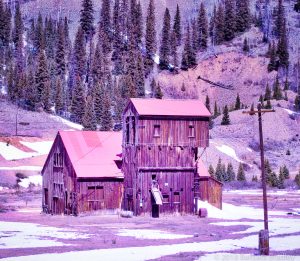
THERE IS MORE!!!
Silverton offers every type of mountain activity you can imagine!
Go hiking. Go rock climbing. Go mountaineering or backpacking.
Go skiing! There are three nearby ski areas; Kendall Mountain is right outside Silverton and Durango Mountain Resort is 23 miles away.Advanced skiing is available with downhill, extreme, heli, snowcat and cross-country. Ski at the Kendall Mountain Ski Area which also has an outdoor skating rink.
Snowmobile! Mountain bikers use sections of the Colorado Trail near Molas Pass. Jeep exploration of the “Alpine Loop” will be an experience you’ll never forget. Raft, kayak or canoe the Animas River. Camp up among the “Fourteeners.”
As you can see, the fun never ends. Put Silverton, Colorado on your list to visit!